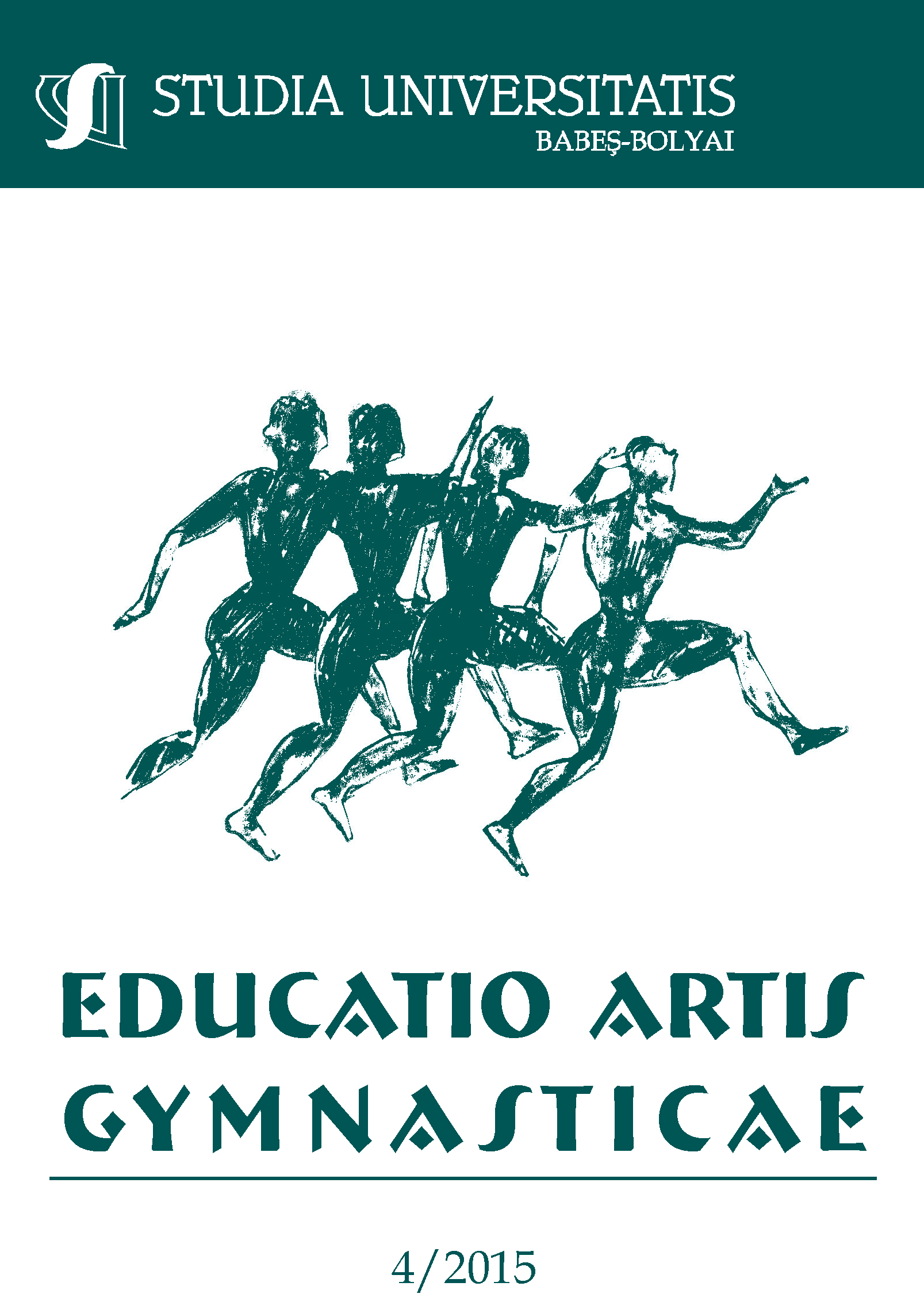SPORT ACTIVITIES AMONG STUDENTS UBB CLUJ-NAPOCA
Keywords:
sports, leisure, individual sports, team sports.Abstract
The importance of a working life for a healthy lifestyle has been proven in many studies and researches. A healthy life cannot be conceived without daily exercise. The exercises conducted regularly and physical activity have proved vital to the health condition of the individual and in the long term. In order to bring health improvements may include physical activity every day. They established many benefits of practicing sport, both anatomically speaking and mentally, emotionally and socially. This paper aims to highlight students' preferences vis-à-vis the sport and the forms of sport practiced by them during their free time. A questionnaire on 465 students aged between 18 and 40 years, coming from the faculties of "Babes-Bolyai" University of Cluj-Napoca in years I and II. The data shows that most students (62.4%) prefer individual sports and declare themselves followers of a minority team sports (15.7%). A high percentage say they do not practice any sport in their free time. In the sport that students would like to practice it, swimming is the girls agreed, followed by aerobics and fitness, while boys would play football, would swim and placed third in basketball items.
Practicarea activităţilor sportive în rândul studenţilor UBB Cluj-Napoca. Importanța unei vieţi active pentru un stil de viaţă sănătos a fost demonstrată în foarte multe studii şi cercetări. O viaţă sănătoasă nu poate fi concepută fără mişcare zilnică. Exerciţiile efectuate în mod regulat şi activitatea fizică s-au dovedit vitale pentru sănătatea individului şi pentru starea sa de bine pe termen lung. Cu scopul de a aduce îmbunătăţiri ale sănătăţii pot fi incluse activităţi de natură fizică în fiecare zi. Au fost stabilite multiple beneficii ale practicării sportului, atât anatomic vorbind, cât şi psihic, emoţional şi social. Această lucrare urmăreşte evidenţierea preferinţelor studenţilor vis-a-vis de activităţile sportive dar şi formele de sport cele mai practicate de aceştia în timpul lor liber. S-a aplicat un chestionar pe un număr de 465 de studenţi cu vârste cuprinse între 18 şi 40 de ani, proveniţi din facultăţi ai Universităţii „Babeş-Bolyai” din Cluj-Napoca din anii I şi II. Datele ne arată că majoritatea studenţilor (62.4%) preferă sporturi individuale şi doar o minoritate se declară adepţii sporturilor de echipă (15.7%). Un procent destul de mare declară că nu practică nici un sport în timpul liber. În ce priveşte sportul pe care studenţii ar dori să-l practice, înotul este cel mai agreat de fete, urmat de gimnastica aerobică şi fitness, pe când băieţii ar juca fotbal, ar face înot şi pe locul trei în preferinţe se plasează baschetul.
Cuvinte cheie: activităţi sportive, timp liber, sport individual, sport de echipă.
References
Bota, A.(2006). Exerciţii fizice pentru o viaţă activă, Activităţi motrice pentru timp liber, Editura Cartea Universitară, Bucureşti.
Carter, N. (2012). Sport as Medicine: Ideas of Health, Sport and Exercise. In Medicine, Sport and the Body: A Historical Perspective (pp. 13–35). London: Bloomsbury Academic. Retrieved July 28, 2014, from http://dx.doi.org/10.5040/9781849662062.ch-001
Coakley J. (2008). SPORT IN SOCIETY, Chapter 1; www.mhhe.com/au/coakley
Dragnea, A (coord.), (2000).Teoria educaţiei fizice şi sportului.Bucureşti: Ed. Cartea Şcolii
Dragnea, A., Bota A. (1999), Teoria activităţilor motrice. Bucureşti Ed. Didactică şi Pedagogică
Hanţiu I. (2013) Kinesiologie, Ştiinţa Mişcării (Note de curs) Oradea
Hurd A. R. şi Anderson D.M., 2011. The Park and Recreation Professional’s Handbook http://www.humankinetics.com/excerpts/excerpts/definitions-of-leisure-play-and-recreation
Kraus, R. (2000). Basic concepts of play, leisure, and recreation. Retrieved from http://www.courseweb.uottawa.ca/lsr3515/PDF/lecture5.pdf
Leonard, W. M. II (1993). A sociological perspective of sport. New York: Macmillan Publishing Company.
Lindstrom, M., Hanson, B. & Ostergren, P. (2001). The socioeconomic differeces in leisuretime physical activity: The role of social participation and social capital in shaping health related behaviour. Social Science and Medicine, 52, 441¬-451.
Rhodes R. E. & Chris M. Blanchard C. M. (2011). Time Displacement and Confidence to Participate in Physical Activity, International Journal of Behavioral Medicine, 18:229–234, DOI 10.1007/s12529-010-9133-6
Şiclovan I,(1979). Teoria educaţiei fizice şi sportului, Editura Sport-Turism, Bucureşti.
Downloads
Published
How to Cite
Issue
Section
License
Copyright (c) 2015 Studia Universitatis Babeș-Bolyai Educatio Artis Gymnasticae

This work is licensed under a Creative Commons Attribution-NonCommercial-NoDerivatives 4.0 International License.



